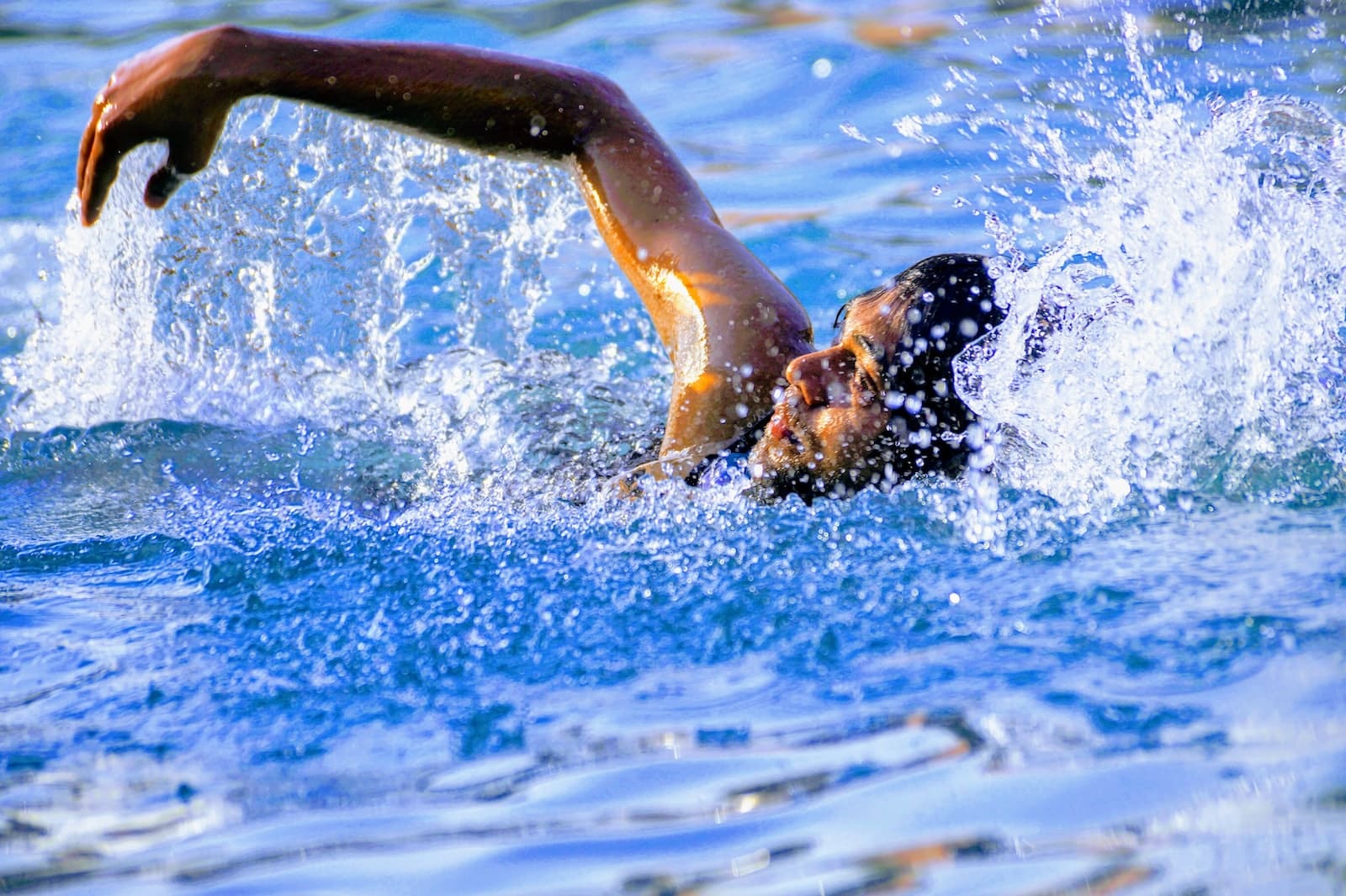Finish Your Stroke

One of the first segments of a swimmer’s stroke to fall apart when fatigue sets in is the finish, the last bit of underwater pulling that takes place during the arms-submerged cycle. Powered by the tricep muscles of the upper arm, the finish of your stroke is essential in maintaining ideal efficiency in the water. Even world-class swimmers tire during their events and end up shortening their strokes on the back end, resulting in a rapid, choppy turnover that is less efficient and which ultimately requires more energy.

As the triceps fatigue and cramp up, the arm bends at the elbow during the final part of the stroke, and the hand is pulled out of the water prematurely (by the hip area) before a full stroke is completed. A correct finish means that your elbow straightens while your forearm is still submerged at your side, with your hand leaving the water by your upper thigh (rather than your hip). This requires triceps conditioning and, initially, concentration during the stroke cycle.
There are a few ways you can strengthen the muscles required to execute a proper finish, the most obvious being in the gym.
Tricep Extensions
Take a lightweight dumbbell and position yourself in front of a mirror. Bending at the waist, look straight ahead and hold the weight at your side with your elbow bent 90 degrees. Then, slowly straighten your arm until it is extended behind you. You have just completed a stroke finish.
Do 10 reps this way, taking care to slowly bring the weight back to the starting position (with your elbow bent at a right angle) before resuming the next rep. Switch arms with the weight and repeat. Alternatively rather than using dumbbells you can use a stretch chord or theraband.
This is a great exercise to do periodically to strengthen your triceps. If you do it consistently and correctly, you will notice a marked difference during your freestyle underwater pull.
Sculling
Another way to strengthen your arms to perfect your finish is to do a drill in the pool called sculling.
Initially you can do this on your front or on your back, going headfirst with your arms by your sides, palms facing toward your feet. press the water out and in out in a figure of eight motion.
Note that the hands are always moving laterally and not big bends from the elbow!
If this gets easy, you can progress it. Lying on your back with your feet facing the opposite end of the pool, push off the wall with your arms (instead of swimming head-first, you will be floating feet first to the far end).
With your arms above your head, wave your hands in a figure of eight motion, concentrating on pushing water above your head and away from you, propelling yourself across the pool. It is slow going, but you will feel the burn in your forearms and triceps if you do the drill correctly. This is also a great way to develop, or maintain, a feel for the water. As a result, you will gain a sense of comfort and efficiency during your pull that only seasoned swimmers have after years of training.
Once you have taken the time to master these simple exercises, there are other ways you can keep yourself in check during your sessions, as the shortening of the stroke is the first, most obvious element to fall apart during hard swimming.
Concentration
During your sessions, always be aware of where your hand is exiting the water during your underwater pull. Is it coming out by your hips, or by your swim suit? Either way, you are swimming with a short, less efficient stroke. Force yourself to extend your elbow so that your hand exits the water by your upper thigh (below your suit line). To make sure you are extending all the way, graze your thumb by your thigh as you recover.
Pulling With Paddles
A method I have depended on for years to ensure a proper stroke finish is to use paddles with only the finger-straps intact. I remove the wrist-bands and affix the paddles to my palms using just the middle-finger band. As such, if I shorten my stroke the paddles will either come flying off or they will pull my finger in an unnatural way. This method of pulling forces me to be disciplined, and trains me to develop a finish to my stroke automatically.
During competition, always concentrate on your underwater pull and make sure you are maximizing the water you are pulling by stretching out your stroke on the front end and extending it at the back end. In time, a correct finish will be second nature and you will be at a distinct advantage to your less disciplined and short-stroked competitors. Remember, it is what you do under the water that makes you faster, much more than what goes on over the top.
Take your time with learning this – as with any skill. The point is that drills are there to make you smoother, stronger, more efficient. Make sure you hit all those target points!
If you have any questions or comments, please feel free to get in touch; either by email, facebook or leave a comment on here!
See what’s up next week for our #SwimTechTues tip!
